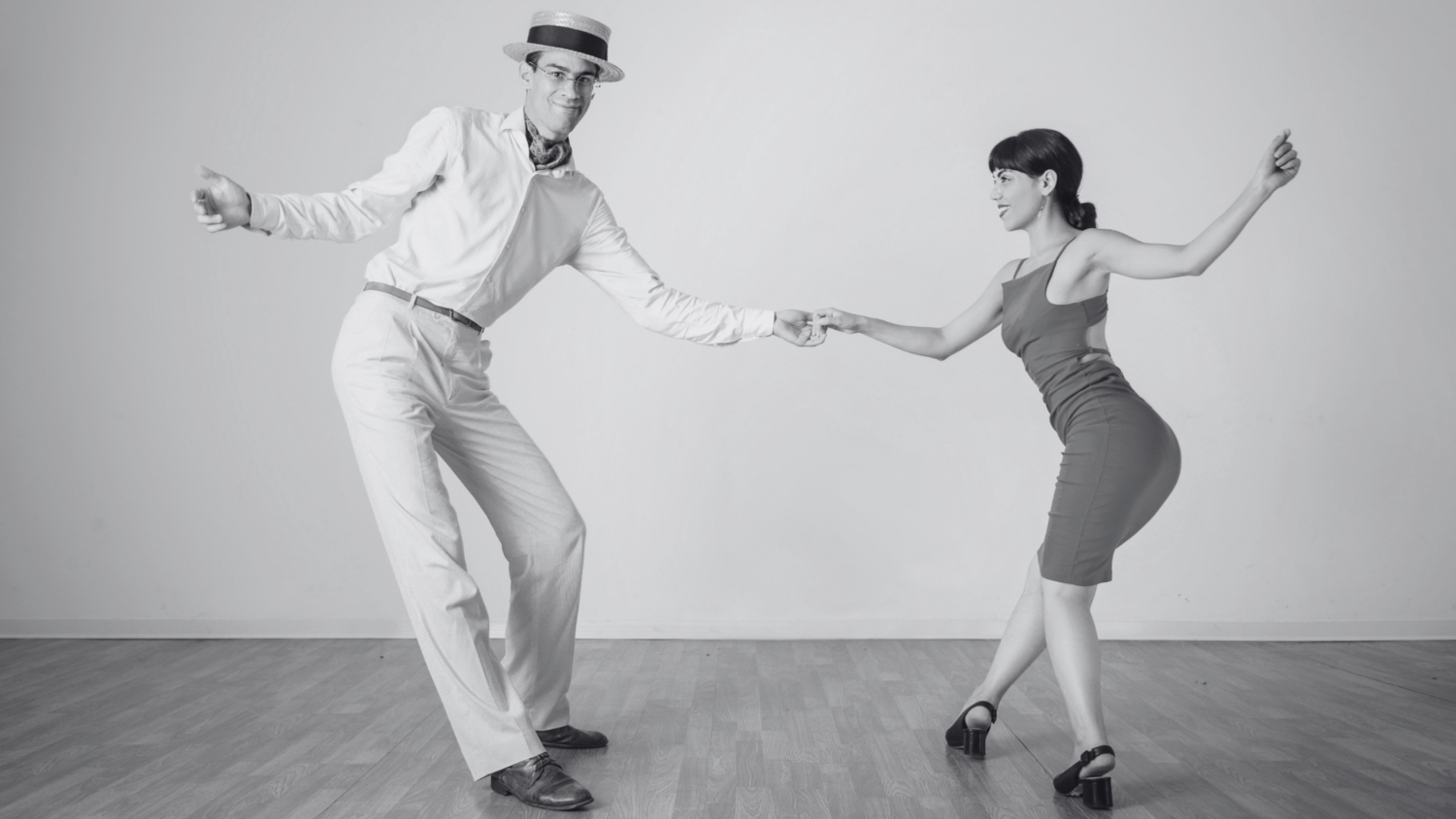Partner dances like the Argentine tango are a wonder to behold when there is symbiosis between leader and follower. Here, the fluidity of motion thrives.
Both dancers’ individual and collective movements appear to be part of some enchanting consequence of inertia and gravity. Guided by the music, the leader becomes a conduit for each beat and transfers this rhythmic pulsing to their partner through a soft push or pull, or subtle pressure on part of the body.

As far as conventions go, leading can perhaps be likened to driving: without skill, direction, and awareness of their surroundings, the vehicle veers off-road, an eventual crash inevitable.
A leader who does not know their steps, who cannot steer the dance to the pulsing of the music, and who is clueless about relative space and motion will likely end up disillusioning the follower or ruining the experience altogether.
More than just simply memorizing a series of steps, leading in Argentine tango is mostly about sharing a connection and not so much about dominating the follower or forcing them into positions and counter-positions without considering their input.

In fact, a post from Tango Mentor argues that
one of the best ways to lead is to focus on what the follower’s heart is saying and having the sensitivity to read their limitations as a dancer as these can cause the follower to tense up and become rigid — something that a good leader must avoid at all costs.
The post further elaborates that, as a leader, one must sense how the follower feels the music as opposed to how one receives the music as the leader.
Taking off from this principle of leading, it is interesting to note that swing dancers have the potential of being excellent tango leaders.
But how is leading in swing similar to leading in tango? What are the similarities and differences between those who lead in these two types of partner dances?

Exploring Swing Dancing and Argentine Tango
To fully understand what commonalities or differences a lead in swing has with a lead in tango, it would be advantageous to first explore swing dancing side by side with the Argentine tango.
Origins
Based on their origins, Argentine tango is older than swing dancing by around half a century, having taken root in the ports of Argentina during the 1880s.
In contrast, the swing is believed to have begun sometime around the 1920s or the 1930s in America.
Further delving into their beginnings, one would realize that both dances were born out of the need to escape dire social and economic conditions.
According to Dance Facts, Argentine tango’s popularity was “fueled with the emotions of thousands of young immigrant men who arrived in Argentina searching for a better life,” while Arthur Murray Dance Now states that swing began during America’s Great Depression, “lifting people’s spirits and providing them with an escape.”
Musicality
In terms of musicality, jazz has been the primary inspiration for swing dancing, as swing itself is the term to describe the forward momentum in jazz’s rhythm.
But more than the technicalities of music, it is fascinating to note that while jazz and tango music might not sound the same, the sentiments they wish to convey are not so different from each other.
According to the National Museum of American History, “Jazz can express many different emotions, from pain to sheer joy. In jazz, you may hear the sounds of freedom — for the music has been a powerful voice for people suffering unfair treatment because of the color of [their] skin, or because they lived in a country run by a cruel dictator.”
Similarly, tango music is described by Tanguito as mainly dealing “with topics that concerned the majority of the population: the hardships of life, poverty, love (or rather lack of love), solitude, whilst providing an outlay for people’s dreams of fortune, travels, luxury, and wealth.”
“These themes brought people together by giving them an identity and a voice.” In many ways, both jazz and tango music reflect the social constructs of their time and the spirited upheaval of the masses against the cultural status quo.
Connection
However, there is a distinct difference between the Argentine tango and swing when it comes to the connection between partners.
Swing, as characterized by a post from Live About, is a dance that has “lots of swinging, flipping, and throwing of dancers. Because it is a non-progressive dance style because it is mostly performed in one spot, it is a popular dance for a crowded dance floor. Swing is a quick, fast-paced dance. Couples hold hands as opposed to placing hands on the shoulders or around the waist, as ballroom dancers do.”
On the other hand, Dance Facts describes tango as a dance that “requires close connection and passion between dancers. [...] The core concept of the tango dance revolves around leader and follower, where the leader, through their embrace, gives openings to the follower [on] what to do, and the follower then chooses how [they] will respond.” Simply put, swing has much more space between its dancers than in tango.
Despite this difference, though, one concept rings true for both swing and Argentine tango: improvisation.
Improvisation
According to Ballroom Dance Planet.com, in swing, one may “follow a specific count and general idea, but you have the freedom to cut loose and let the music move you.”
The same concept applies to Argentine tango, wherein movements are not a result of memorized choreography but are the consequence of the intimate connection between the leader and follower as they navigate the space, the music, and their relationship with each other.
In knowing these similarities and differences, one can better understand how the concept of leading applies in either dance.
Following the Lead
Like tango, swing has evolved into different styles over the years, with variations in steps and points of origin. There’s the lindy hop, East Coast swing and West Coast swing, jitterbug, jive, Carolina shag, balboa, and boogie-woogie.
According to a blog post from Medium,
“The swing genre of dance is unique for its transmutation into many distinct shades of movement. Dancers use the term ‘swing’ to refer to one or all of these styles.”
Of these, perhaps the most popular are the East Coast and West Coast swing variations, both of which foster improvisation among partners.
In a nutshell, East Coast swing, according to Arthur Murray Dance Now, takes up “a large amount of space on the dance floor as [the dancers] move around in a circular pattern incorporating lots of twists and turns.” West Coast swing, according to the same post, is “a slower and more formal dance. Instead of following a circular motion, dancers stay in a rectangular shape.”
Both can be energetic and sensual, which are characteristics shared with the Argentine tango.
Howcast.com notes that the general body position for swing dancing usually incorporates “space between two partners to allow room for bigger movements like twirling. The leader’s left hand should extend out at waist level, while the follower’s right hand reaches out to meet it. The leader’s right hand should rest on the follower’s back below their shoulder blade, while the follower’s left hand should rest on top of the leader’s extended right arm.”
Of course, this runs contrary to the basic body positioning for Argentine tango, wherein both partners are connected chest to chest, the center of their bodies parallel with each other, leaving little room between them unless they agree to open the embrace, which is a temporary move.

How then can swing dancers make good tango leaders if they don’t share the same body positions in the first place?
Swing does not employ a closed embrace and is more of an impact-impulse lead than the Argentine tango, which operates mostly on upper body contact and leading from the center.
While the intimacy between partners is more toned down in swing than Argentine tango, it is the creativity and spontaneity that swing dancers incorporate that make them good candidates for leaders in Argentine tango.
After all, leaders in both dances are encouraged to follow the music and listen to their partner, which leaves very little room for memorized steps, more flexibility to think outside of the box, and more reasons to use intuition.
A more concrete example of how leaders in swing can become good tango leaders is the way that steps are proposed and executed.
In the case of the East Coast swing, Passion 4 Dancing provides some tips on how to perform these steps for the lead: “Apply pressure forward using the entire body but mostly the left arm (for the rock step). Make sure to extend the elbow slightly. Now, after the rock step, using your body weight and right arm connection, lead the followers to triple side steps in both directions. Ladies, don’t anticipate the lead — simply connect forward to your partner to feel his lead.”
As one may observe, the subtle application of pressure at the right time and having a firm connection are necessary for swing dance leaders to draw the follower into their intended step or series of movements.
They might not lead with the center like tango leaders, but swing leaders do lead through the subtle shifts in body weight and the direction in which their arms maneuver the follower.
When brought to a milonga, it is then quite likely that a good swing leader will not experience much difficulty adjusting to the rudiments of Argentine tango as both swing and tango share the same basic principles of leading, though the physical manifestations are not the same.

Listen to Lead
When it comes to leading, regardless of which dance one enjoys, it is important to remember that a leader is only as good as their ability to connect with themselves and the follower. Especially in tango and swing, no matter how well-versed a leader is in executing basic steps, the dance will ultimately lose its authentic experience if the leader does not know how to improvise and make use of their sensitivity and intuition, blocking them from being spontaneous and creative. In many respects,
listening — to one’s body, one’s partner, and the music — is a form of leading, which is a crucial attribute that both leaders in tango and swing must exercise.
If you wish to learn Argentine Tango, we put our methodology in the book. You can reserve yours HERE.

